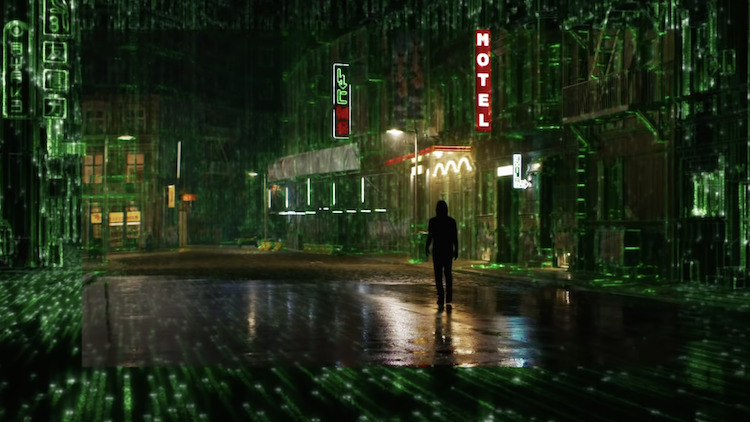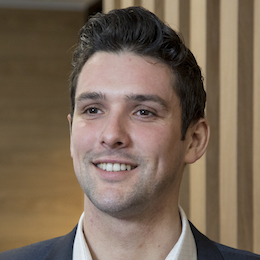
In 1999, The Matrix unleashed a revolution in science fiction movie-making, but more importantly it piqued a generation’s interest in future technology while fanning the flames of humanity’s mistrust of machines.
This week the fourth movie in the franchise (and the first since 2003), The Matrix Resurrections, assaults cinemas nationwide and sends its hero, Keanu Reeves’ Neo, back to face the machine oppressors.
Who better to muse about the franchise’s themes and their impact on and relevance to both digital twins and society than Digital Twin Fan Club regulars Henry Fenby-Taylor and Neil Thompson? This is a spoiler-free zone, so read on in safety.
Neil Thompson: As the the new Matrix movie Resurrections is released, Henry and I have let our imaginations loose and have considered our wildest ideas of the future. The Matrix is a cyberpunk dystopian vision of the future where artificial intelligence has found sentience and the machines take over society and build a virtual world that serves as a zoo for humans to use their bodies as fuel cells [nice distillation of the plot – Ed.].
Henry Fenby-Taylor: The idea of The Matrix was created in the book Neuromancer by William Gibson, long before the metaverse! “The future is here, it’s just not very evenly distributed,” is the opening line and that is as true then as it is now. At the high end of gamer culture, you can already create a fully immersive virtual environment that elicits real response from people as if they were in that virtual world. We get closer to The Matrix every year.
NT: The movie plays with the foundations of our identity. “What is real?” asks (Neo’s mentor) Morpheus in the original film. A demo of the Unreal 5 game engine that markets Resurrections showcases how today’s computer graphics can fool us into thinking we are watching something real. We are at an exciting tipping point where the virtual and physical worlds are indistinguishable.
HFT: Since the conception of the Matrix/metaverse, the idea of people living in virtual worlds, in grand homes and fabulous surroundings is contrasted with their physical reality, when the headset comes off: their world is drab and depressing; they live in disgusting, worn clothes in a tiny nondescript flat in an unending sea of high rises.
NT: Which is interesting, right? The economics of scarcity of the real world restricts us while the economics of abundance in the digital space allows us to live these extravagant lifestyles in virtual space!
HFT: And yet with the invention of blockchain and NFTs (non-fungible tokens), are we heading towards a digital world that is just as limited and expensive as the physical one? Why have a virtual world if we’re going to make it identical to the real one!? We can use the virtual and real world to empower ourselves if we understand how they work. Neo sees how the Matrix operates and can master it, but totally fails to understand the real world outside of the Matrix.

“We are at an exciting tipping point where the virtual and physical worlds are indistinguishable.”
NT: Seriously though, what is real? As engineers, we make ‘real’ things in virtual space, and you have to ask some pretty fundamental questions. What is this thing? What is it called? How is it classified? How do I communicate these virtual things to other humans and machines to make them real?
HFT: We navigate this virtual/real divide every day though, we communicate on our phones, we control the heating back home and we get Christmas presents for our loved ones delivered the next day. All of these things take place without any intervention from us other than tapping the screen: we miss entirely the open standards and infrastructure that sits underneath it all, enabling these virtual worlds and physical worlds to work in simpatico.
What if we develop a metaverse that is indistinguishable from reality? What does that mean for our built environment? What are our big ideas, contemplating the possible outcomes from a real-life Matrix?
Digital statecraft
NT: If we replicate statecraft for virtual space, we might find a tension between governing the virtual and physical worlds. We think that the governing of virtual space will prevail over physical space. We see this today as social media influences the outcomes of political processes, changing the course of history.
HFT: The internet exists in the real world though, you cannot escape the rules of the country that you’re accessing the internet in and you will be arrested and extradited for hacking servers in the US if they can get a hold of you!
NT: Yes, but a technology firm could establish a state in virtual space without land or borders. We can almost see this today, as technology firms are commercially larger than some countries and navigate the world through their digitally-based business models, allowing them to operate outside legal frameworks such as taxes and data sovereignty.
HFT: Interesting, international shipping companies register their ships in Panama. People do that so they can avoid the maritime laws in their own countries. With a digital ‘flag of convenience’, content creators could do the modern equivalent of serving alcohol in prohibition or give a voice to the oppressed.

“The internet exists in the real world: you can‘t escape the rules of the country that you’re accessing the internet in.”
Citizenship by subscription
NT: I’m seeing a steady rise in my outgoings on subscriptions, from streaming, access to software to my mobile phone, medical insurance and car. Why not buy them all in one place? A firm could bundle these services and manage a lifestyle you desire into a single subscription.
HFT: Subscription models solve a lot of problems. We went from listening to vinyl to tapes, to CDs in a short amount of time and that created a lot of waste. Now music is virtual we don’t have to worry about whether a new file format becomes available, we pay for a service and we get access to all the world’s music. If virtualisation means hyper globalisation, then who treats my wounds and educates our children?
NT: What if we extrapolate servitisation from the consumer to the citizen by bundling things like healthcare and education into virtual space?
HFT: This model of access over ownership just isn’t possible without the virtual world. In the same way that we can access virtual items online. Complex structures that charge you for how much of a thing you actually use need this cyber-physical world. Whether we want that or not is a different question.
An abundant market for design
HFT: There is no substitute for visiting the Eiffel Tower in person. It is a feat of design that draws millions of tourists to Paris. However, the problem with visiting Paris in person is that the reality of the experience might not meet our expectations. Paris syndrome is the experience of profound disappointment when tourists visit the French capital. So why not enlist designers to make a replica of the perfect experience virtually, saving us from the peril of Paris syndrome?
NT: That’s interesting because Paris is the most visited capital city on Google Maps! I wonder if the expectation would change if we connected virtual space directly into our senses? My point is that our technology of interacting with the metaverse still requires intermediary interfaces such as screens, haptic feedback and peripherals like keyboards and pointers. What if we can have a direct interface with our imaginations?
HFT: As the experience of the virtual world becomes more mainstream and turning ideas into experiences becomes ever easier, then people will be able to make their own iconic places. This is already happening in computer games and online experiences where virtual landmarks are destinations in their own right, because people spend time, effort and money to visit them.
NT: Of course, the interesting dynamic here is we simultaneously broaden the market for design as digital space is essentially infinite and will lower the barrier of entry to enable the creation and translation of our imaginations into virtual space. The use of NFTs can also facilitate this market. Like your point before, the tension of scarcity in digital space can drive exciting opportunities for engineers.
These ideas are merely vignettes of more significant, more complex techno-social landscapes. We haven’t got the space to explore them entirely, but we will commit to producing a more detailed Digital Twin Fan Club podcast. We encourage you to tweet us @theDigitalTwin, and you could feature on the episode.
We hope you brush up on The Matrix series of films and enjoy the latest in the cinema, and we also urge you to stream the 2021 version of Dune!
The Matrix Resurrections is in cinemas nationwide from 22 December.












